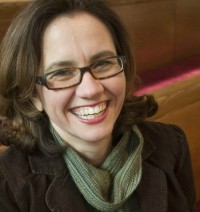From temple to tabernacle
I think about the children of Abraham and Sarah, wandering around the desert for forty years, eating manna while they longed for milk and honey, stumbling over shifting sands while they yearned for the promised land. They had a tabernacle, a dwelling place for God that they set up and took apart.
Then, when they settled into their destination, they began to build more solid structures—political, judicial, and religious structures. They went from a system of judges to the reign of kings. Their second King, David, made plans for the tent to be taken down and the Temple to be erected. Since David’s hands were too bloody from war, he didn’t build it. But his son, Solomon, did. He replaced the canvas with blocks and the tent pegs with columns.
Of course, Solomon’s Temple didn’t stand forever. When the Babylonians conquered Israel, they destroyed the temple. Even that magnificent structure did not stand eternally. Which is a good thing for us to remember.
As Christians, we’re in another moment of our religious history, and much of it has to do with bricks and mortar. For many ecclesial bodies, frustrations over denominational decisions have caused disputes over property. Church courts and committees are clogged with people who want to leave particular denominations, and they’re fighting to take their buildings with them.
Then there are the more mundane frustrations. A faithful large community becomes a faithful small community, and their voices bounce about in the cavernous space that they assembled when they were bursting at the seams.
Or the cost of repairs begins to encroach on so much of the budget that the church no longer has any resources for mission.
Along with this blog, I write a regular column on new communities and ministries. My husband is starting a new ministry. I also host a couple of Unconferences which gathers creative leaders. (And if I may make a plug… there is less than a month to register for Unco West in San Francisco. If you do follow the column, most of the people I write about I've met at UNCO, like Anna Woofenden who is planting a garden church, J.C. and Mindi Mitchell who started a church for people of all abilities, and Hugh Hollowell, who is a pastor to people experiencing homelessness. And I'd love to meet you there.)
I’m in the midst of church-in-transition conversations all the time, with people all over the country. The thing that keeps coming up is what to do with the buildings. New churches rarely own buildings, as we seemed to have walked away from the “if you build it, they will come” mentality.
In urban areas, people lease the air space for parking lots. In towns, people are using land for community gardens. Churches host juried art shows and use the proceeds to pay for annual building updates. Some churches sell their buildings and move to the local elementary school’s cafeteria. Other congregations are learning to rent out their space to the community—maximizing their income as well as well as being a service to the neighborhood.
The point is, I wonder if this might be a time to remember that God was present in the temple and the tabernacle. I love architecture. I love soaring structures and hope we can find uses for them. But I also realize that they have become a tremendous burden for many congregations to do the sort of love-your-neighbor work that they long to do. Are we moving into a moment when we need those tent pegs in order to be led where God wants us?





